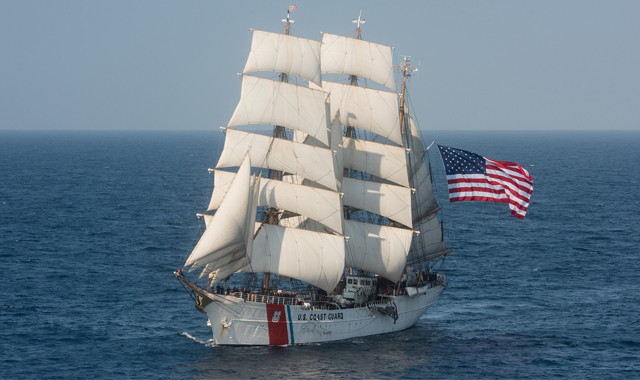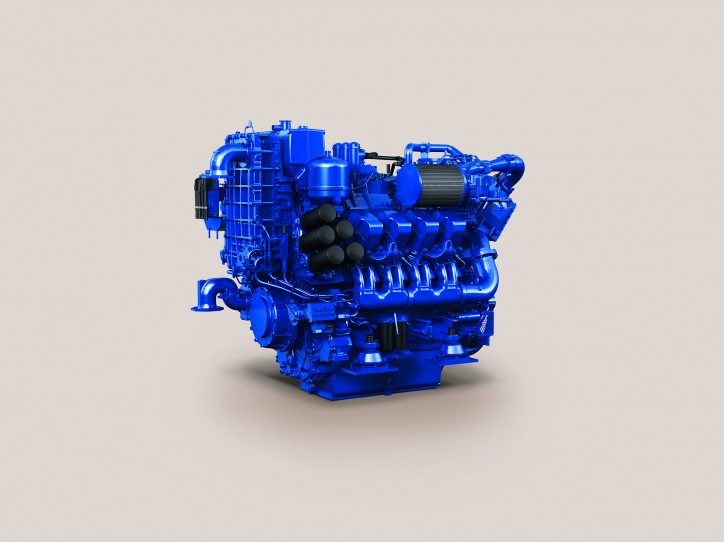Rolls-Royce has been chosen to power the US Coast Guard’s barque Eagle, also known as ‘America’s Tall Ship’, with state-of-the-art MTU diesel engines and integrated ship automation system. The eighty year old training barque was initially built for the German Navy and included in the reparations paid to the US following World War II. The MTU brand is part of Rolls-Royce Power Systems.
The three-masted Eagle, which drives under full sail in the open ocean at speeds up to 17 knots (19.5 mph/ 31 km/h), will receive one MTU 8V 4000 marine propulsion engine for use when the cutter is not in sail. The vessel is being repowered and the move will also include the addition of MTU Callosum – an integrated ship automation system that allows operators to monitor the propulsion plant, the on-board power supply and the entire ship. The U.S. Coast Guard is MTU's biggest customer in the United States.

Rolls-Royce was chosen to power the U.S. Coast Guard's barque Eagle, also known as 'America's Tall Ship', with a Series 4000 MTU engine. The eighty year old training barque was initially built for the German Navy. (U.S. Coast Guard photo by Auxiliarist David Lau)
Mike Rizzo, government naval programme manager at MTU America Inc. said: “The biggest benefit the U.S. Coast Guard has in turning to MTU is its consistency in its fleet. The U.S. Coast Guard fleet has many MTU-powered vessels. By powering the U.S. Coast Guard training cutter with the MTU Series 4000, cadets will be able to directly translate their experience on the training cutter to other MTU-powered vessels.”
Knut Müller, Head of Marine and Defence business at Rolls-Royce Power Systems, said: “MTU’s Series 4000 engines offer unrivaled power density in terms of volume-to-power and power-to-weight ratio, and are certified by the American Bureau of Shipping’s (ABS) Naval Vessel Rules (NVR). Engineered for a low operating noise level and designed to offer superior performance, the Series 4000's advanced technology ensures security at sea with exceptional fuel efficiency and reliability compared to other engines in its class. The engine’s lower operating noise is attributed to a resilient mount system that absorbs vibration and comes standard on all MTU marine engines.”
The vessel’s Series 4000 marine propulsion engine will be provided by a team led by prime contractor BMT Designers & Planners of Alexandria Virginia. Atlantic-based MTU distributor, Johnson & Towers. With more than 90 years of expertise, Johnson & Towers will supervise installation and conduct onsite product training, while MTU will offer engineering programme support.

MTU's Series 4000 engines offer unrivaled power density in terms of volume-to-power and power-to-weight ratio, and are certified by the American Bureau of Shipping's (ABS) Naval Vessel Rules (NVR). In the picture: the MTU Ironmen marine engine 8V 4000.
Ken Houle, off-highway sales manager at Johnson & Towers said: “It's a great feeling to be a part of history. The Series 4000 Ironman engine is reliable and efficient. Its performance and reliability are second to none. This project is a great example of MTU working together with its partners, in this case Johnson and Towers and BMT Designers & Planners, to ensure the end customer is happy.”
About America’s Tall Ship – A US-Coast Guard training barque with history
The 295-foot ship was built in 1936 for the pre-World War II German Navy. The tall ship was included in the reparations paid to the United States following World War II and recommissioned as the U.S. Coast Guard Cutter Eagle. Together, American and German seamen sailed the ship to its new homeport, New London, Conn., where it‘s been home ported ever since.
In New London, the Eagle is docked on the Thames River near the U.S. Coast Guard Academy. The Eagle acts as a training vessel, giving the U.S. Coast Guard’s future officers an opportunity to practice navigation, engineering, teamwork and leadership while also learning to sail on a historic vessel. A permanent crew of six officers and 55 enlisted personnel maintain the ship year-round. Up to 150 cadets are on board for training periods ranging from one week to two months. Today, it’s the largest tall ship flying the American flag.
Source: Rolls-Royce